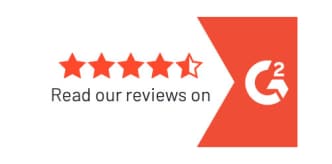The state of California has enacted into law a mandatory retirement plan called CalSavers. This mandate will affect millions of companies with employees in California. Understand the details and implications before making a decision with far-reaching consequences.
Retirement Planning in California: The Problem
In California, an alarming number of workers, about 7.5 million according to the GAO, don’t have access to an employer-provided retirement plan. Many of them rely on social security and other government benefits to help them survive as they age. But these programs are overburdened and have proven to be an inadequate living income.
The GAO determined that a large number of wage-earners would participate in employer retirement plans if they were offered. Nearly half of all low-income workers who are working for small businesses did not have employer-supported retirement accounts. And, even when retirement plans were available, less than half took advantage of them.
While employees had a variety of reasons why they didn’t participate, the overwhelming number–about 84%–were ineligible, meaning they could not contribute if they wanted to.
In anticipation of future burdens to both workers and the social programs that support them, the state created a program to help the problem and enacted it into law.
CalSavers: How it Works
CalSavers is essentially a payroll-deduction Roth IRA plan. It’s mandatory for non-governmental employees in both for-profit and not-for-profit companies that have at least 5 employees in California. If companies have a separate retirement plan in place, they are exempt from the mandate.
For employers who have joined the program, their employees will be enrolled automatically. The default contribution rate is 5% of gross income, and it includes an optional auto-escalation feature that will automatically increase the contribution rate by 1% each year until it reaches 8%. Employees are forced into using the system, but they can manually opt out if they want.
Employers are legally restricted from making contributions for or on behalf of the employee, and they have no fiduciary responsibility in regards to accounts of employees. Unlike with 401(k) plans, for example, CalSavers will not allow companies to offer matching funds to employees.
It is illegal for employers or staff to express any opinion either in favor of or opposed to, either encouraging or discouraging participation in the CalSavers program. The program administration is handled by a private business called Ascensus, and not directly by state employees.
Employer Compliance Timeline
Employers need to keep in mind the deadlines they are facing. The deadlines are based on the number of employees.
- With 100+ employees: be registered by Sept 2020
- With 50+ employees: be registered by June 2021
- With 5+ employees: be registered by June 2022

By these dates, employers need to either register to participate in CalSavers, or apply for an exemption based on their current retirement plan. If they are non-compliant for 90 days, they are subject to fines of $250 per eligible employee. After 180 days, the fines double to $500 per eligible employee, an amount that can add up very quickly.
CalSavers Pros and Cons
On its most basic level, the California state-mandated retirement program does exactly what it aims to do: it makes it possible for companies that do not already have ERISA qualified retirement funds to offer employees a retirement plan option, with no cost or liability to the employer. The low barrier to entry makes it a particularly attractive option to employers.
CalSavers also offers automatic enrollment for employees, and auto-escalation if they want to increase their contributions to as much as 8% of their gross income.
A deeper dive into the program, however, uncovers some concerning issues.
Issue 1: Roth IRAs Are Not for Everyone
Roth IRA accounts are a great option, but they are not great for everyone. The accounts in the state-mandated programs are still subject to federal rules, and many employees may not realize it.
The main concern is the maximum contribution amount of $6000 per year. If an employee is more highly compensated, making over $120,000 per year, that maximum represents less than 5% of their income. This means if the employee is auto-enrolled at the default 5%, they will find themselves in trouble with the federal government when they contribute too much to their account.
The same problem applies to those who have additional private IRAs. The contribution maximum does not allow for $6,000 per IRA, only $6,000 per contributor. So if an employee is already contributing $4,000 to a privately held IRA, they would only be able to contribute an additional $2,000 to their CalSavers account.
Neither the employer nor the state of California have responsibility to notify the employee of this situation, so participants who aren’t aware of the conditions might find themselves subject to extra taxation.
Additionally, contributions to Roth IRAs are always made after taxes. Depending on personal circumstances, a participant may be much better off using a plan with pre-tax contributions. CalSavers does not offer this option.
Issue 2: Auto-Enrollment
Auto-enrollment can be a really great way to increase participation rates, but it must be done carefully to avoid causing problems. Employees must be very clearly notified about their enrollment, as well as how they can opt out, and opt out procedures must be simple and easy to follow, even for non-English speakers.
Since every employer is different, some will inevitably do a better job at this communication than others, leaving some employees essentially in the dark about where their money is going. And Ascensus, the company managing the CalSavers plan, is a large corporation. This could potentially (but not definitely) delay the resolution of errors caused by miscommunication, leaving an employee without their expected money for some time.
These types of issues can be frustrating and problematic for employees, especially those who can least afford delays. It puts employers in the middle, potentially complicating their relationships with employees. In today’s difficult labor market, it’s a problem many employers cannot afford to have.
Issue 3: Earnings and Fees
Perhaps most concerning are the results for participants. CalSavers offers very limited investment choices, and those who are not knowledgeable about investing may find the options confusing. The default fund is a money market fund which aims to have a yield of 0%. It’s designed to not lose money, and the result is that it typically doesn’t make money.
While some of the options have had good yields, the default fund has not.
Ascensus charges fees of just less than 1%, usually 0.85%-0.95%. While this may sound like a small amount, it looks quite large when compared to competitor plans. Typical plans available privately charge about half that amount, about 0.45%. This can cost a contributor tens of thousands of dollars over time. In fact, a participant contributing $6000 per year over 20 years might lose more than $100,000 to these fees.
Even savvy employees may struggle to decide on the best fund, since information about the options isn’t readily available. But, participants who aren’t watchful and careful may find themselves in worse condition than if they had put that money into a savings account at their bank.
Issue 4: Government Involvement
While the state of California has mandated this retirement program, the implementation and management is subcontracted to the lowest bidder, in this case, Ascensus. For business owners, this means finding a way to cooperate with a large corporation that is paid by the state.
Some employers (and employees) are sensitive about what personal information is shared with government bureaucracies. More importantly, many business owners are concerned about any involvement the state will have with their business, and the long-term implications of that involvement.
Issue 5: Lost Opportunities for Employers
Perhaps the main reason employers offer a retirement plan is for the tax benefits. Depending on the state they are in, and the type of plan they use, a business may receive $5000 in tax credits per year for 3 years after setting up a new plan. And, if they contribute to employee’s accounts, they may deduct that expense on their taxes.
Good retirement plans offer some tax advantages for participants as well, allowing them to grow their personal wealth either pre- or post-tax, and receive matching contributions from the employer that aren’t subject to payroll taxes.
Employers typically spend a few hours each month handling administrative tasks related to CalSavers. While some retirement plans also require administrative work, not all do, and newer platforms often relieve much of the burden on employers. CalSavers does not offer payroll integration, and mandates that employers send payroll details every pay period.
Consider These Alternatives to CalSavers
Several good alternatives to CalSavers are readily available.
- Traditional and Roth IRAs (for individuals)
- SEP and SIMPLE IRAs (work-sponsored)
- Traditional and SIMPLE 401(k)s (work-sponsored)
- Solo (k) (for a single self-employed individual plus spouse)
- 403(b) (for non-profits and governments)
An employer-provided 401(k) typically offers low administrative costs, thanks to automation and payroll integration. They give both employers and employees solid tax advantages, they offer a wide range of investment options and more direct control over the accounts. They generally provide better customer service, as well as technology that is constantly improving.
These privately-offered retirement options give employers a valuable tool for improving their employee retention. According to a recent employee confidence survey, 60% of respondents place an emphasis on benefits when deciding whether to accept a job, and 80% say they prefer additional benefits to a pay raise.
It can be particularly beneficial for employers who typically hire low-wage earners. These workers rarely have access to work-sponsored retirement benefits, so a 401(k) can easily attract the highest caliber of employees. Plus, it helps them to be more financially stable, happier, and more likely to stay at their job.
Since traditional 401(k) plans have been expensive and cumbersome in the past, many owners of small businesses have considered them out of reach. New platforms, such as 401GO, provide automated platforms that cut costs, time, and liability so substantially that they are easily within the reach of almost every employer.
Become a 401GO Partner
401GO was built with small businesses in mind, and it is available to both the newly self-employed and larger corporations, and everything in between. Brokers and agents have a unique opportunity to use 401GO for their clients. Helping small businesses that are subject to these new mandates find better solutions can greatly increase your market share and profitability.
401GO offers:
- Automated onboarding in just minutes, not weeks
- Increased user control, easy account access, and lots of investment options
- Affordability, at just $9/user/month
- Plan flexibility that allows employers to add components which suit their unique needs
- Payroll integration that can save time every pay day
- Automated compliance eliminates reporting and testing worries
- Access to actual humans, with live support for both employers and employees
Ask for more information, or become a partner today.



